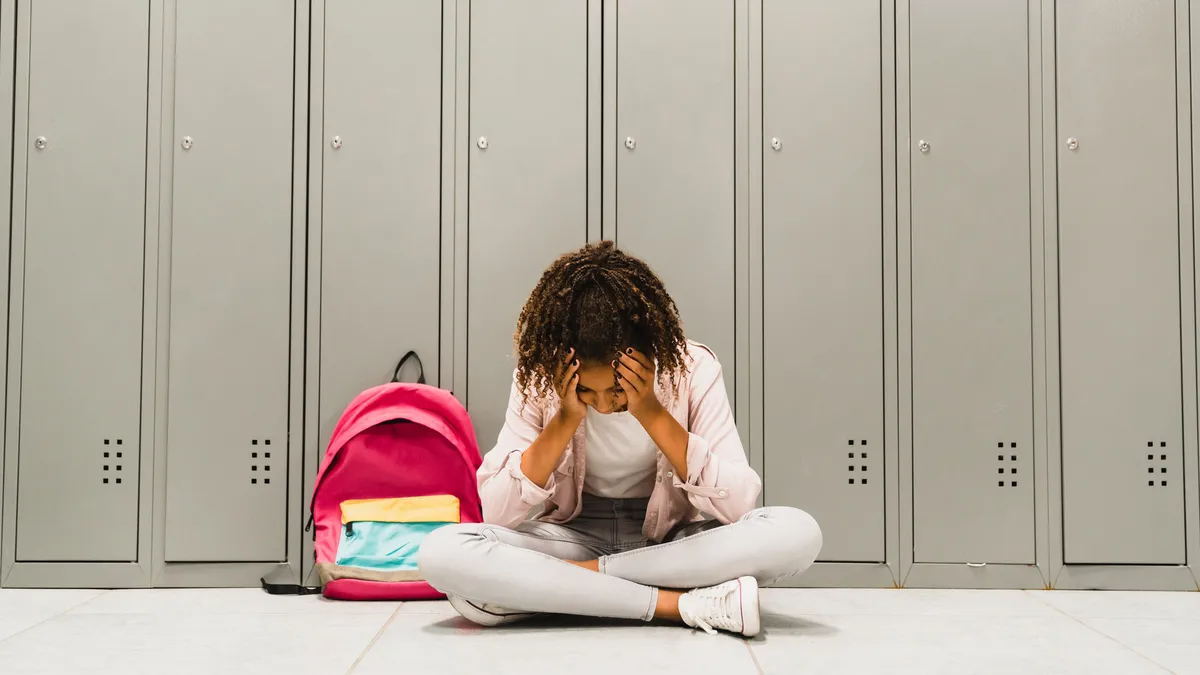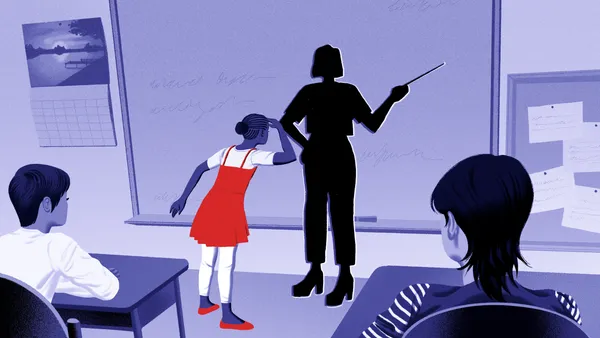As schools note more incidences of student anxiety, experts warn against being dismissive of students' worries on the one hand or of overcompensating by removing triggers that contribute to the anxiety on the other.
That's what not to do. What should be done, however, often has educators perplexed.
That's because anxiety symptoms and reactions vary from child to child. And intervention should be nuanced based on the intensity and longevity of the anxious behaviors, said Peter Faustino, a school psychologist and board member of the New York Association of School Psychologists.
Faustino said school psychologists he's spoken to report receiving more student referrals for anxiety in recent years. According to the 2022 KIDS COUNT Data Book released Monday by the Annie E. Casey Foundation, 11.8% of children ages 3-17 experienced anxiety or depression in 2020. That's a 25.5% increase from 2016, when 9.4% of children had those conditions.
Anxiety in children, as defined by the Centers for Disease Control and Prevention, is when fears and worries interfere with school, home or play activities. According to the Diagnostic and Statistical Manual of Mental Health Disorders, the diagnostic criteria for anxiety disorders is excessive anxiety and worry — occurring on most days for at least six months — about a number of events or activities. People with anxiety have difficulty controlling their worries, the DSM-IV criteria said.
CDC data shows that between 2016 and 2019, 9.4% of children ages 3-17, or about 5.8 million children, ever had a diagnosis of anxiety.
Schools, however, should not wait for students to be clinically diagnosed with anxiety to react to their worries, Faustino said.
"When someone is concerned about something like anxiety, I think we've got to really work on connecting them to the appropriate intervention or services sooner rather than later," Faustino said. "The outcomes are better when we can kind of intervene earlier."
COVID-19, with the death of loved ones and the isolation it created, contributed to students' traumatic experiences, highlighting the need for educators to watch for warning signs for mental health challenges, said Amelia Malone, director of research and innovation at the National Center for Learning Disabilities, in an email.
"It's important that educators refer students to receive services if they see signs of distress. Schools must prioritize students' well-being," Malone said.
Experts shared with K-12 Dive five approaches for schools to take in supporting students who are experiencing anxiety.
Put effort into prevention
Teachers and administrators can model positive techniques for coping with worry and stress, said Jessica Dirsmith, clinical assistant professor of school psychology at Duquesne University and 2017 recipient of the School Psychologist of the Year Award in Pennsylvania, in an email.
For example, a teacher could share with students that they are worried because they only have 30 minutes to teach a math lesson that typically takes 50 minutes. The teacher and students could then discuss potential solutions and reflect on that problem-solving exercise, Dirsmith said.
She also recommended two other prevention techniques: gratitude journaling and ensuring time for making social connections.
Faustino suggested educators emphasize the importance of healthy habits for children, including good nutrition, ample exercise and quality sleep.
Inclusive social-emotional learning is a promising approach for promoting both well-being and a sense of belonging in the classroom, Malone said. She also recommended schools collect data on these practices and disaggregate the data by disability status.
"It's incredibly important to know if a child's school is looking at how different initiatives work for different students," Malone said.
Acknowledge the student's reaction to anxiety
When a student is worried or anxious, educators should talk with the student and their parents about the student's fears, Faustino said.
"I think schools are working hard to make sure that every child you know is followed up on," he said. "I do think that sometimes we have to listen to the students more and talk a little less, right, really try to get a pulse on what they're experiencing and feeling."
In addition to better understanding why a student is worried, educators can determine if the fear relates to a specific event or experience, such as exam week, Faustino said. That information can then be used to help the student develop coping strategies, he said.
Dirsmith advised educators to take an empathetic approach and validate the feelings the student expresses. She also recommended teachers avoid approaches that focus on a student's weaknesses or what's wrong with the student. Instead, adults should focus on a student's strengths, she said.
Teach coping skills
Not all worries or all anxieties are a problem, Dirsmith pointed out. In these cases, teachers can help students understand that sometimes worries and fears are typical reactions to certain events, perhaps a big test or school performance.
When worries persist, one approach Faustino recommended is to help a student list all of their tasks in order from the one that seems the least scary to the most scary. Using this "fear ladder" approach, educators and parents can help students talk about how to accomplish the task, starting with the least scary approach. Then, when the student has met that goal, an adult can talk through how to build upon that success with approaches for other tasks that cause worry.
"It's a lot about listing the fears, recognizing which ones we're going to tackle, developing ways to manage our physiological response," Faustino said.
Letting students avoid events they are anxious about is not recommended because that can reinforce the fear and prevent students from developing healthy responses to their fears, according to the Child Mind Institute.
Understand when a higher level of support is needed
If a student's anxiety persists beyond six months and pre-referral interventions — such as teaching coping skills — don't help, it can be time for more intensive support, Faustino said.
Concerning behaviors like prolonged school avoidance or social withdrawal should also trigger targeted interventions. Different approaches could include therapeutic intervention, an evaluation for a diagnosis, or a referral for Section 504 accommodations or a special education evaluation, said both Dirsmith and Faustino.
Mental health professionals can also identify any other psychological conditions, according to a paper published by the National Association of School Psychologists.
Celebrate growth
When students overcome challenges, including a fear that stood in their way, educators should recognize their efforts, Dirsmith said.
Overcoming a fear is a powerful experience that can help students through the next time they feel anxious about a task, Faustino said.
"The treatment approach is that you've got to sort of learn to tolerate some of [the fear] so that you realize that on the other end, is also this space where you say, 'Oh, I've overcome my anxiety. I battled back against it. I feel so much better. I'm in control of the anxiety,'" Faustino said.





















